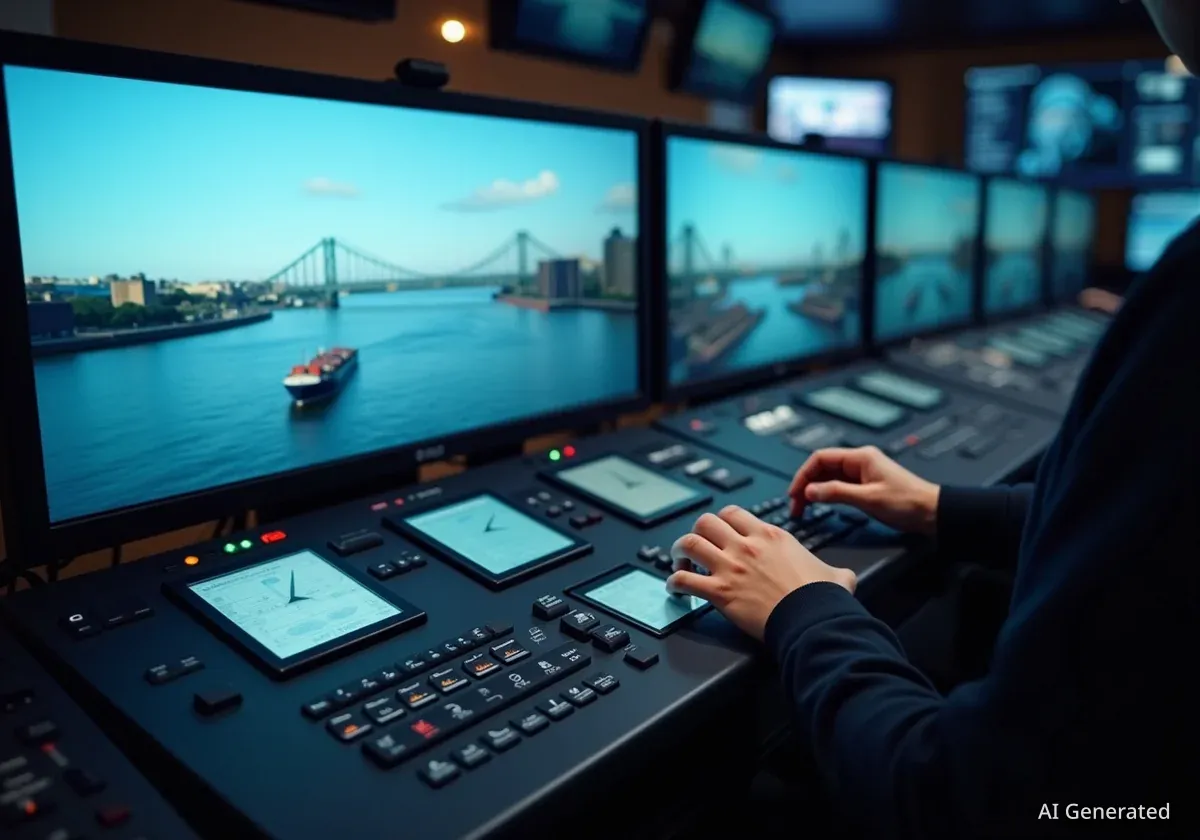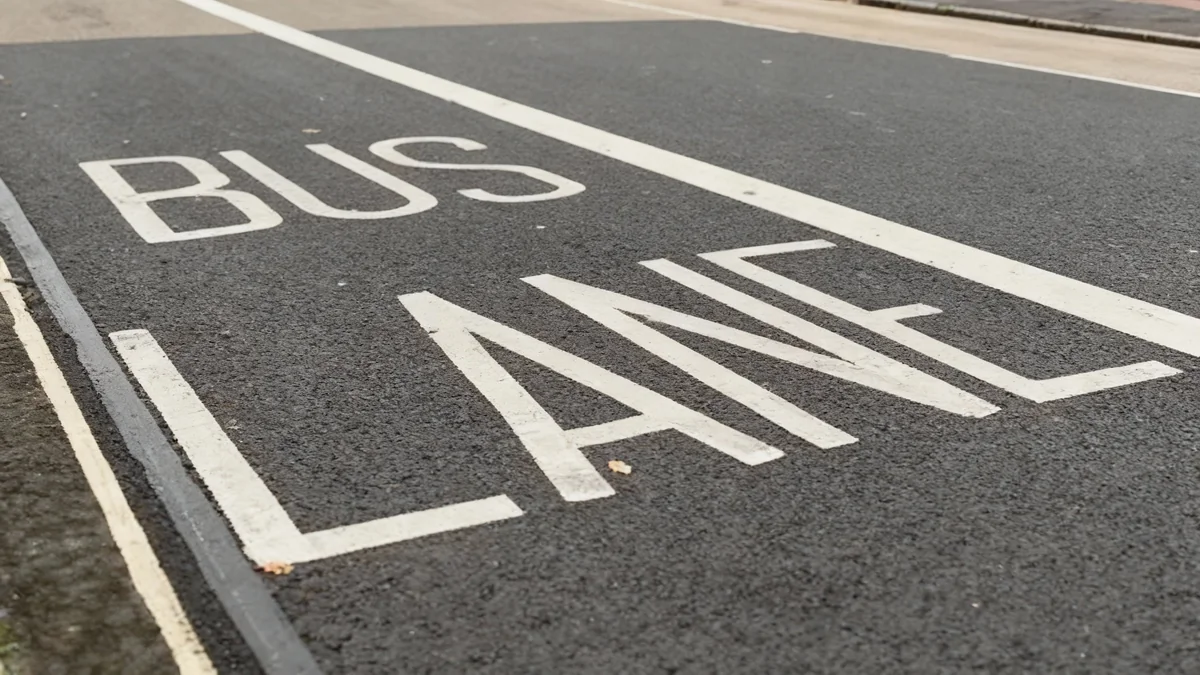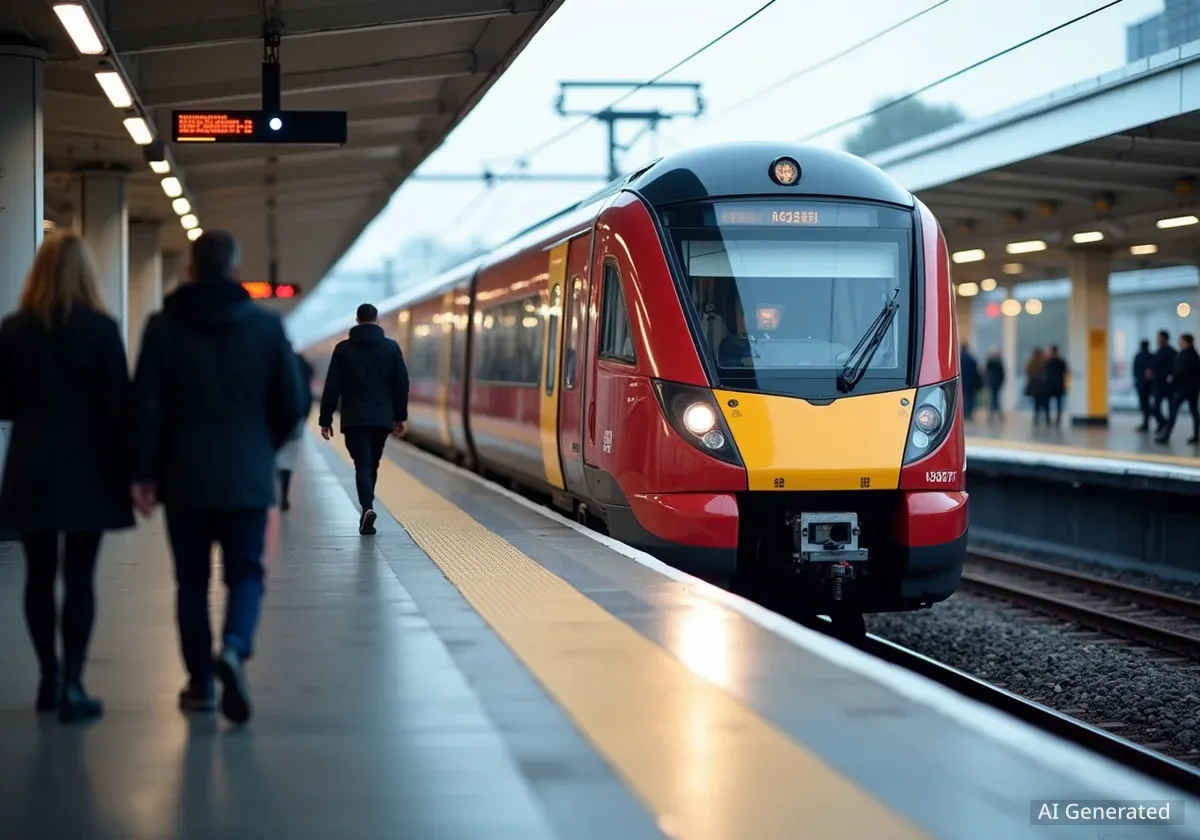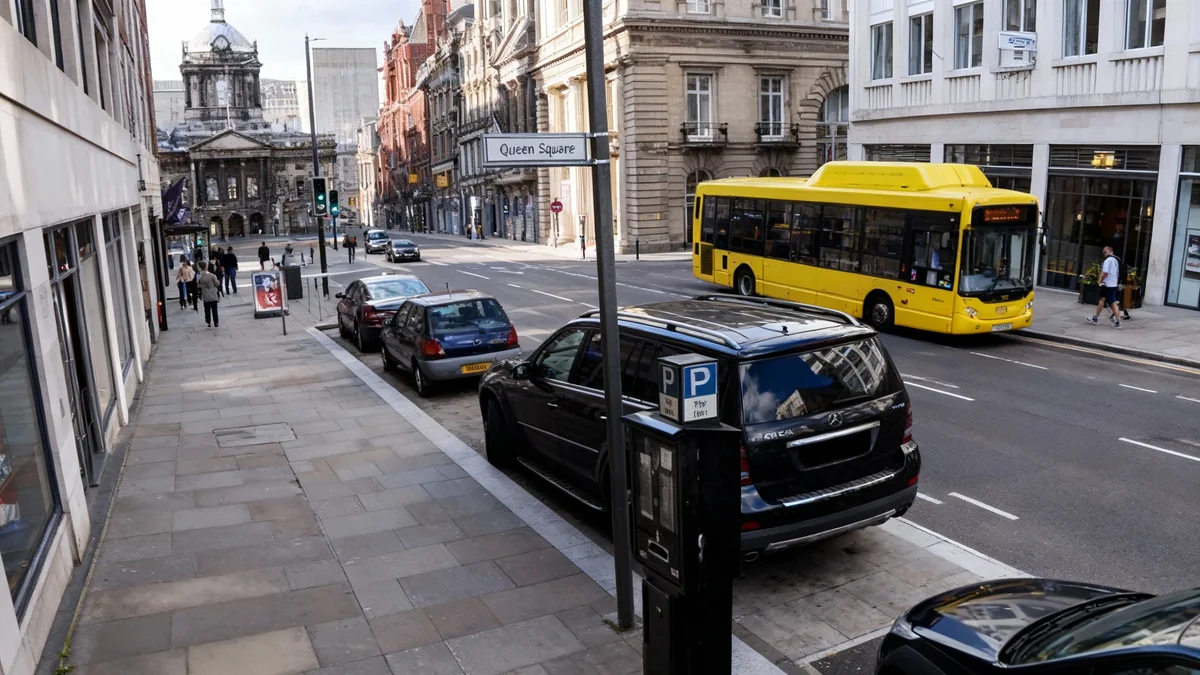The first new Mersey Ferry in six decades is preparing to enter service, with captains undergoing advanced training on a state-of-the-art simulator. Liverpool City Region Mayor Steve Rotheram recently visited Liverpool John Moores University to test the controls of the £26 million vessel, the Royal Daffodil, which is scheduled to launch next year.
The new ferry, currently under construction at the Cammell Laird shipyard, represents a significant investment in the region's iconic transport service. It features modern green technology and a sophisticated propulsion system designed to improve efficiency and safety on the River Mersey.
Key Takeaways
- The Royal Daffodil is the first new Mersey Ferry to be commissioned in 60 years, with a total cost of £26 million.
- Captains are receiving specialist training on an advanced maritime simulator at Liverpool John Moores University.
- The new vessel is equipped with a modern Azipod propulsion system and hybrid-ready green technology.
- The ferry is being built locally at the Cammell Laird shipyard and is expected to enter service in 2026.
- This project is part of a wider masterplan to modernise the Mersey Ferries service, including terminal upgrades.
A New Chapter for an Iconic Service
The introduction of the Royal Daffodil marks a major milestone for the Mersey Ferries. For the first time in 60 years, a brand-new vessel is being built specifically for the famous river crossing, signalling a new era for the service that has become a symbol of the Liverpool City Region.
The £26 million project is a cornerstone of a broader strategy to secure the future of the ferries. This plan includes significant infrastructure upgrades to enhance the passenger experience and ensure the service remains a vital part of the region's public transport and tourism offering for years to come.
The Mersey Ferries are a world-renowned symbol of Liverpool, famously immortalised in the 1965 song "Ferry 'Cross the Mersey" by Gerry and the Pacemakers. The service provides both commuter transport and leisure cruises, offering unique views of the city's UNESCO World Heritage waterfront.
During a recent visit to the training facility, Mayor Steve Rotheram highlighted the cultural significance of the ferries and the importance of this investment.
"The late, great, Gerry Marsden immortalised the ‘ferry ‘cross the Mersey’ and they’re a part of who we are. They’ve carried generations of people across the river, to work, to gigs, to games and back home again. But just like our region, they’re evolving."
He added that the new vessel represents the region's forward-thinking approach. "The Royal Daffodil is the next chapter in that story – cleaner, greener, and built right here on the banks of the Mersey. It’s a real symbol of the pride, innovation and graft that make our area special," the Mayor stated.
Advanced Training for Modern Technology
To prepare for the new vessel's arrival, Mersey Ferries captains are undergoing a comprehensive training program. A key component of this is the use of a high-tech maritime simulator at Liverpool John Moores University (LJMU), which replicates the experience of piloting the Royal Daffodil on the River Mersey.
Inside the Simulator
The simulator allows captains to familiarise themselves with the ferry's advanced systems in a safe and controlled environment. They can practice a wide range of scenarios that would be difficult or dangerous to replicate in real life, including:
- Emergency stop procedures
- Precision docking at ferry terminals
- Complex manoeuvres in tight spaces
- Navigating in various weather conditions, from calm seas to storms
This virtual training ensures that the crew will be fully prepared to handle the new vessel from its first day in service. Mayor Rotheram had the opportunity to experience the simulator firsthand, virtually test-driving the ferry and its cutting-edge controls.
The simulator provides a realistic digital recreation of the River Mersey, complete with accurate representations of currents, tides, and landmarks. This level of detail is crucial for effective training.
In addition to simulator work, captains are also gaining practical experience. They are spending time on Lake Windermere, operating a vessel that uses a comparable hybrid-ready engine system to the one installed in the Royal Daffodil. This combination of virtual and real-world training ensures a well-rounded preparation for the 2026 launch.
Cutting-Edge Engineering and Green Credentials
The Royal Daffodil is being built at the historic Cammell Laird shipyard in Birkenhead, continuing a long tradition of shipbuilding on the Mersey. The vessel is the most technologically advanced ferry ever commissioned for the service, with a focus on efficiency, safety, and environmental responsibility.
A major innovation is its Azipod propulsion system. This is a significant departure from the traditional propulsion used on the current 60-year-old ferries. The old system requires manual throttle management and complex engagement for turning. In contrast, the new Azipod system provides automated control, making navigation simpler, safer, and more precise.
The ferry also boasts green technology with state-of-the-art, hybrid-ready engines. This design makes the vessel more fuel-efficient and reduces emissions, aligning with the Liverpool City Region's commitment to tackling climate change. It ensures the ferry service is not only preserved but also made sustainable for the future.
Modernising the Entire Ferry Experience
The new vessel is just one part of a comprehensive masterplan to revitalise the entire Mersey Ferries experience. The Liverpool City Region Combined Authority is investing in significant upgrades to the ferry terminals on both sides of the river.
In 2024, major improvement works at the Seacombe ferry terminal in Wirral were successfully completed. The next phase of the plan involves the transformation of the Woodside terminal, further enhancing the facilities for commuters and tourists.
Even with the arrival of the high-tech Royal Daffodil, the traditional skills of ferry operation will not be lost. Captains will continue to operate both the new and existing vessels, creating a highly adaptable and experienced team. This blend of old and new ensures the preservation of maritime heritage while embracing the benefits of modern technology.
"Seeing our captains mastering this new technology shows that, while the kit might be cutting-edge, the spirit of the Ferries remains exactly the same." - Steve Rotheram, Mayor of the Liverpool City Region
The combined investment in the new ferry and terminal upgrades aims to safeguard the iconic service, improve the passenger journey, and solidify the Mersey Ferries' place as a key attraction and transport link for generations to come.





